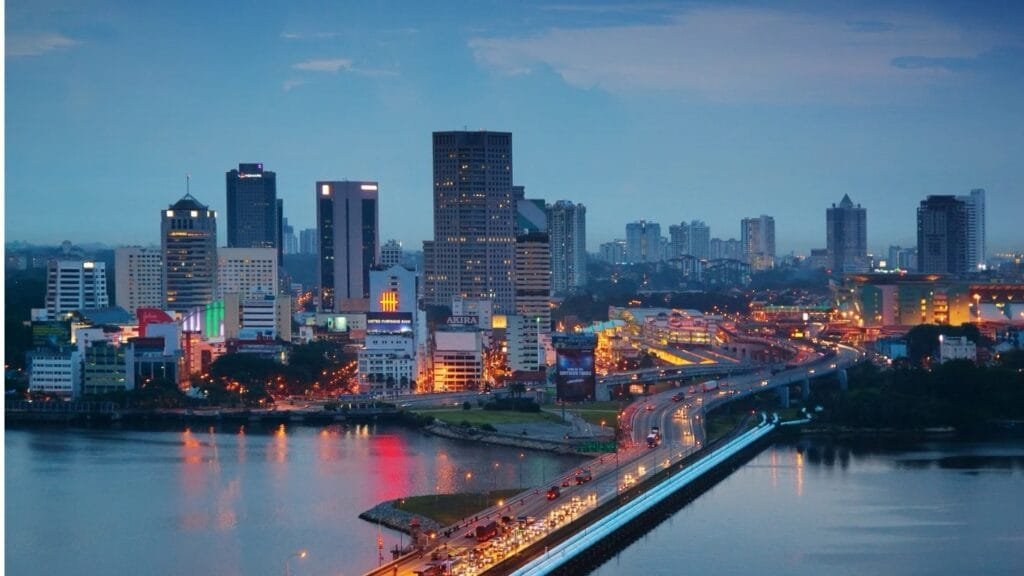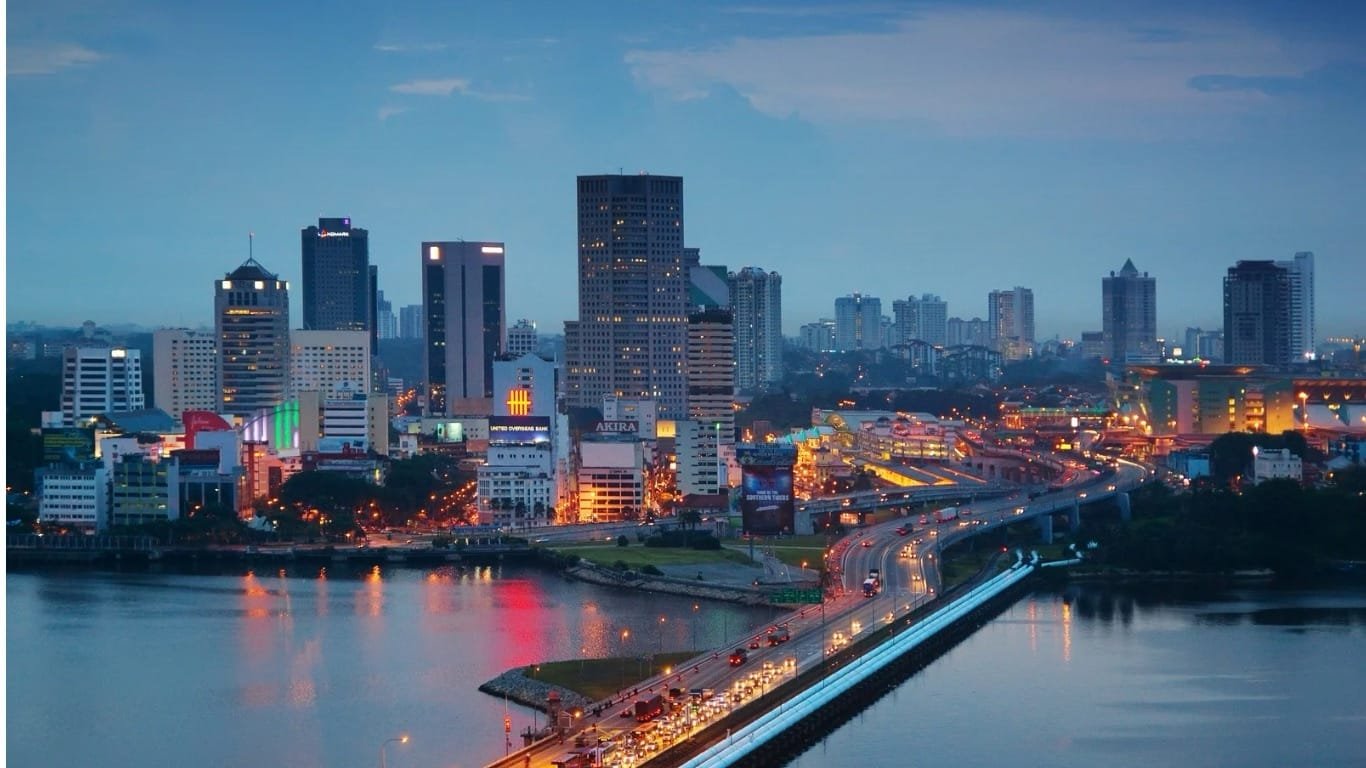Introduction
The Johor-Singapore Special Economic Zone (SEZ) is set to become a game-changer in cross-border economic collaboration between Malaysia and Singapore. Announced in 2023 and gaining momentum in 2025, the SEZ aims to boost trade, investment, and workforce mobility between the two neighboring nations. With Johor already a key hub for industrial activities, this initiative will further enhance its appeal as a regional economic powerhouse.

📌 Key Highlights of the SEZ:
- Enhanced cross-border trade and streamlined customs procedures
- Special tax incentives for businesses
- Improved connectivity and infrastructure
- Facilitated workforce mobility between Johor and Singapore
- Strengthened bilateral economic ties
1. What is the Johor-Singapore Special Economic Zone?
The SEZ is a designated economic area with special regulations and incentives designed to attract investments, facilitate business operations, and promote economic integration between Johor and Singapore.
📊 Key Features of the SEZ:
- Lower corporate tax rates for businesses operating within the zone.
- Fast-track customs clearance to improve trade efficiency.
- Enhanced investment incentives for high-tech and manufacturing industries.
- Better transport and logistics connectivity via improved rail and road links.
- Eased work visa policies to facilitate talent mobility between Johor and Singapore.
✅ Strategic Location:
- Covers Iskandar Malaysia, an emerging industrial and business hub.
- Close proximity to Singapore, making it an ideal spot for regional business operations.
- Connected by the Johor-Singapore RTS Link, expected to be operational by 2026.
2. Economic Benefits and Investment Opportunities
The SEZ is expected to strengthen economic ties between Malaysia and Singapore, creating new opportunities for businesses and investors.
💰 Projected Economic Impact:
- RM 50 billion (USD 11 billion) in new investments over the next decade.
- 500,000 new jobs created in manufacturing, tech, and logistics sectors.
- Trade volume increase of 30% between Johor and Singapore by 2030.
- Significant boost in property values in Johor’s economic zones.
🏢 Industries Benefiting from the SEZ:
- Manufacturing & High-Tech Industries – Electronics, semiconductors, and precision engineering.
- Logistics & Supply Chain – Warehousing, shipping, and regional distribution hubs.
- Financial Services – Cross-border banking and fintech innovations.
- Tourism & Hospitality – Johor’s hotel, retail, and entertainment sectors.
- Renewable Energy & Sustainability – Green technology and electric vehicle (EV) manufacturing.
📌 Key Companies Expanding into the SEZ:
- Intel Malaysia – Exploring advanced chip packaging facilities.
- Tesla Malaysia – Potential EV supply chain investments.
- Grab & Shopee – Strengthening regional logistics operations.
- Singaporean SMEs – Relocating operations to take advantage of lower costs.
3. Infrastructure & Connectivity Improvements
To support the SEZ’s development, both Malaysia and Singapore are investing heavily in infrastructure projects that will ease transportation and logistics bottlenecks.
🚆 Major Infrastructure Projects:
- Johor-Singapore RTS Link – A rapid transit system connecting Johor Bahru to Singapore, reducing daily commute times from 2 hours to 30 minutes.
- Expansion of Senai International Airport – Supporting increased business and cargo traffic.
- New highways and industrial parks – Enhancing accessibility for businesses in Johor.
- Port of Tanjung Pelepas expansion – Strengthening Johor’s role as a regional shipping hub.
📈 Expected Impact:
- 50% reduction in border congestion at Woodlands and Tuas checkpoints.
- Faster customs clearance for goods moving between Johor and Singapore.
- Increased real estate demand in Johor, especially in Iskandar Puteri and Nusajaya.
4. Challenges and Potential Risks
Despite its promising outlook, the SEZ faces some challenges and risks that need to be addressed for sustainable success.
🚧 Challenges:
- Workforce Shortages – Malaysia needs to upskill workers to meet Singapore’s high-tech demands.
- Regulatory Differences – Harmonizing tax policies and business regulations between the two countries.
- Geopolitical Uncertainties – Potential changes in policies due to political shifts in both nations.
- Infrastructure Delays – Ensuring timely completion of transport projects is critical.
- Cost of Living Differences – Balancing wage expectations between Johor and Singapore-based workers.
💡 Potential Solutions:
- Government collaborations on workforce training programs.
- Creating unified business policies to ease cross-border operations.
- Long-term masterplans ensuring seamless infrastructure integration.
5. Future Outlook: What’s Next for the SEZ?
With strong backing from both governments and private-sector investments, the Johor-Singapore SEZ is poised to become one of the most significant economic developments in Southeast Asia.
🔮 Future Predictions:
- By 2030, Johor could become a major global manufacturing hub, rivaling Taiwan and South Korea.
- Singaporean companies will increasingly shift operations to Johor to optimize costs.
- Iskandar Malaysia will see a property boom, with more luxury residences and commercial projects.
- Increased cross-border employment opportunities will benefit both nations.
- Regional trade partnerships with ASEAN will strengthen Malaysia-Singapore trade relations.
📊 Growth Projections:
- GDP boost of RM 100 billion to Malaysia’s economy over the next decade.
- Trade volume between Malaysia and Singapore to exceed USD 150 billion annually by 2030.
- Johor’s population is expected to grow by 20% due to increased employment opportunities.
Conclusion
The Johor-Singapore Special Economic Zone represents a significant leap forward in economic integration between Malaysia and Singapore. With billions in investments, improved infrastructure, and job creation opportunities, the SEZ is poised to become a leading regional economic hub. However, addressing regulatory, workforce, and infrastructure challenges will be crucial for long-term success.
📌 Key Takeaways:
✅ RM 50 billion in new investments projected within the next decade.
✅ 500,000 new jobs to be created across key industries.
✅ Johor-Singapore RTS Link will cut travel time to 30 minutes.
✅ Increased trade and economic cooperation between Malaysia and Singapore.
✅ Strategic location and tax incentives make it attractive for global investors.
💡 What are your thoughts on the Johor-Singapore SEZ? Will it reshape Southeast Asia’s economy? Share your opinions!



